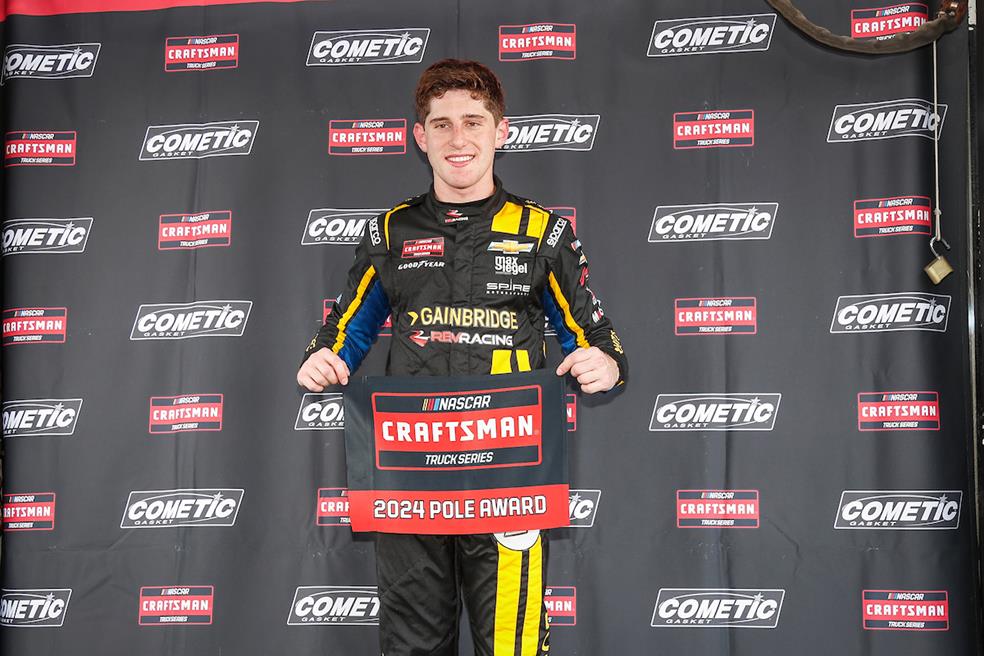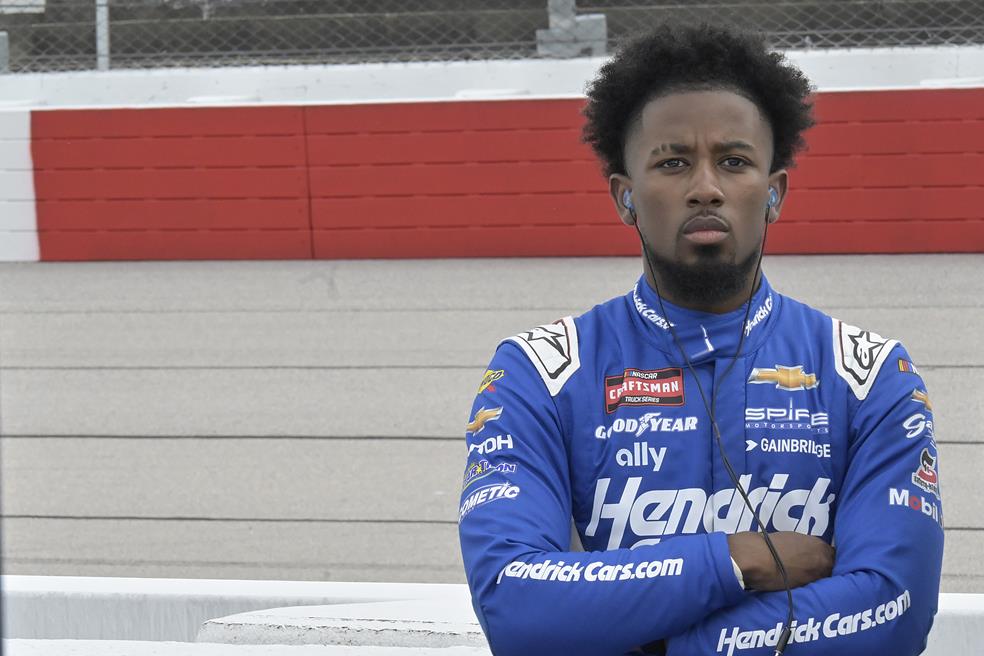By Seth Eggert, Associate Editor
If you were teleported back in time to a NASCAR race weekend in 2003, what exactly would you see? Besides the future Hall of Famers and stars of the sport at that time, just how much difference would there be in terms of the people, both on track, on pit road, and in the grandstands? Well, NASCAR fans, to quote a single from Matchbox Twenty, who will perform the pre-race concert for the Coca-Cola 600 at Charlotte Motor Speedway, “Let’s see how far we’ve come.”

Although there was some representation prior to the founding of NASCAR’s Drive for Diversity program, it was minimal. Among the African American drivers were Bill Lester and Willy T. Ribbs. Women on track included Tammy Jo Kirk, Shawna Robinson and Kelly Sutton. International representation was largely limited to Carlos Contreras. Of these drivers, each of whom were representative of diversity, only Lester was full-time in competitive equipment.
Much like the world itself, NASCAR has changed for the better in the past two decades. The Confederate flag was banned from tracks. The fan base has become more diverse with celebrities and former athletes like Bernard Pollard Jr. among those that regularly follow the sport.
Without the Drive for Diversity program, some of that much needed change likely never happens. Without the program, we may not get several current stars of the NASCAR Cup Series such as Kyle Larson, Daniel Suarez, and Bubba Wallace. Each made their way through the program. Both Larson and Suarez have become champions in the Cup Series and NASCAR Xfinity Series respectively. All three have also reached victory lane multiple times.
NASCAR Vice President for Diversity and Inclusion Brandon Thompson pointed directly at the Drive for Diversity program as the change maker in today’s NASCAR. Without that program we don’t get the monumental step forward in 2020 that the sport made. Though Thompson admitted that he doesn’t know what the timeline for the diversification of the sport will be or should be.
“Here’s how I answer: is [the diversification] fast enough?” Thompson said. “I don’t know what the timeline for that should be or what it is. What I would say is that without the Drive for Diversity program, having been founded 20 years ago, we would not have had the moment that we had in 2020 because there would have been no Bubba, right. And so, I think that when you do just that simple math, if you will, I think it speaks to your point, so I don’t know.
“You talked about the exponential growth and one of the things I said after Bubba won, it’s been what, 60-some-odd years between him and Wendell Scott, it wouldn’t be another 60 and that’s certainly been proven a few times over especially this year.”

One catalyst for these changes outside of the drivers has been Rev Racing. The Max Siegel-owned race team has competed in Late Model, ARCA Menards Series, and NASCAR Craftsman Truck Series competition. In addition to being a team that aids drivers from under-represented backgrounds to make their way up the racing ladder, the team, through the Drive for Diversity combine, also aids in bringing the next generation of pit crew members into the sport.
Up and down pit road the diversity of those climbing over the wall has become more and more apparent. The pit crew members come not only from college athletics but also from international sports. The Drive for Diversity program has provided more and more opportunities to athletes from across the sports world.
With four-tire pit stops approaching the eight-second bracket, teams need more and more professional athletes to minimize their time on pit road. Whether it’s Brehanna Daniels, Breanna O’Leary, or Dalanda Ouendeno, each have earned their place on pit crews as athletes thanks in part to the Drive for Diversity program.
“Well, I think you have to look across the entire sport and there are opportunities for professionals or opportunities in the teams or opportunities on the field to play,” Siegel said. “If you just look statistically at the spots that are available, when we look at it that way, I tell people all the time that this program is helping [to bridge] the barrier to entry support from a cost perspective, but just sheer statistics with talent being able to drive at the highest level requires a special human being.”
Besides the visuals of drivers like Rajah Caruth, Hailie Deegan, Larson, Nick Sanchez, Suarez, Ryan Vargas, or Wallace, or the pit crews, the representation on track and on teams have correlated to a diversifying fan base. Though not as numerous as the dedicated fan bases of Chase Elliott or Ryan Blaney, Caruth, Wallace and others have a steadily growing number of dedicated fans.
That representation only serves to increase and grow NASCAR’s fan base overall. It can be seen both at the track and on social media. On Facebook several fan-made groups supporting Deegan, Wallace, or simply to connect African American fans number in the thousands in membership. Deegan alone has one of the largest fan-made NASCAR Facebook groups with over 65,000 members, second only to the sport’s most popular driver, Elliott.
While these numbers and statistics show, to quote the song ‘Disciple’ from The Warning, “Haven’t you heard the news that the world isn’t ending? It’s starting again, but all the non-believers keep on pretending,” there is still more work for the sport to do. Unfortunately, not everyone will be convinced, nor will everyone accept the changes that have been made or will be made.
Those ‘non-believers’ in the vision that NASCAR has had to grow its’ fan base likely will continue to be a vocal group, just as there are similar groups in other facets of everyday life. What the sport is trying to do is to build bridges to communities that have not been regularly represented in the world of American motorsports.
However, the progress that has been made in the sport since Drive for Diversity was created 20 years ago is staggering. Today, alumni of the program account for five full-time drivers, two championships, over 50 wins and 50 poles, and over 1,400 combined starts. While numbers like these might have been unthinkable just over 15 years ago, it’s the people that the program has brought to the sport, both in the industry and in the fan base that truly counts.
“I think all of us would like to see progress faster,” Siegel admitted. “We all know that there’s a lot of work to do, but I’ll tell you, having been involved for 16 years. It’s a testament to the leadership of the sport and the teams right now. I see a lot of momentum that has picked up over the last I’d say three to four years.”
Among those that have been brought to the sport and are more comfortable being able to attend races is Kianna Davis. While Davis may be known for the ‘It’s gonna be May’ meme, she is also a part of the Victory Lane Vibes podcast. 20 years ago, she didn’t have the same representation at a NASCAR race that is seen today. As both Siegel and Thompson implied, Drive for Diversity is much more than just earning a win or a pole position.
“It’s important because it’s just nice to see people who look like me at the track, both in the stands and in the garage,” Davis explained. “It’s nice to just feel seen and, going back 20 or so years, I didn’t have that kind of representation to really look at.
“I knew about Wendell Scott and Bill Lester. Like, there aren’t many people that I could really look up to that have been in the sport. There are people on [pit] crews and their stories never got told. I think it’s important now that we really go back and make sure that we tell those stories and also commit to telling stories in the future.
“We do have new stars coming to the sport. We have team owners coming in who are minorities and there’s just so much happening. And I feel like the stories just aren’t getting told. That was why we started Victory Lane Vibes because we wanted to try to tell those stories from our perspective, as African Americans, but also just to highlight the stories across the board that are not being told. It’s very important that you know we highlight diversity, celebrate it and just remember to make a commitment to make sure that everyone feels welcome when they come to a track.”
NASCAR’s Drive for Diversity has already made a difference both on and off the track in the first 20 years of the program and it will very likely continue to make positive changes in the next 20 years.